LED Display Panel
HARSE is a global leader for LED video wall solutions with thousands of marquee installations around the world.
led panel display
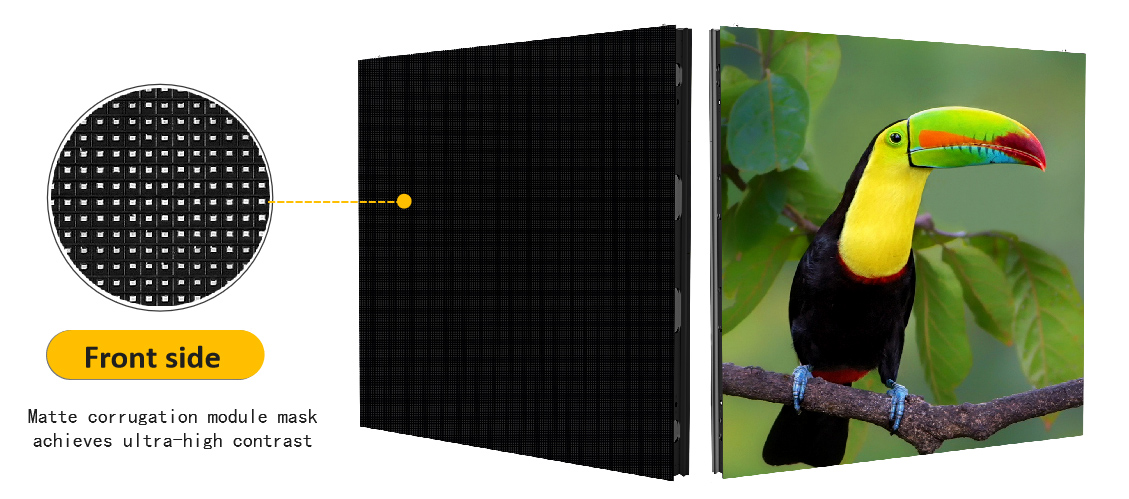
Indoor LED panels are designed for use within buildings. They typically feature lower brightness levels than outdoor models but offer finer pixel pitches, resulting in better resolution and image quality.These panels are fixed installation and are ideal for environments such as shopping malls, conference rooms and corporate offices where close viewing is often required.
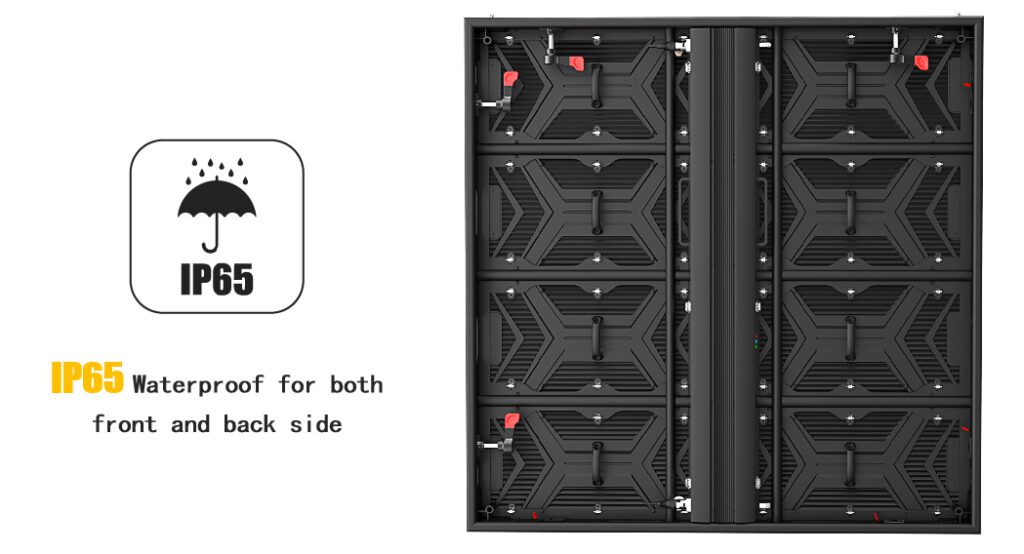
On the other hand, outdoor LED display panel are built to withstand harsh weather conditions. They are equipped with higher brightness capabilities, ensuring visibility even in direct sunlight. These panels are often used for billboards, sports arenas, and public transportation stations. Moreover, they typically come with weatherproofing features, making them durable against rain, snow, and UV exposure.
Key Differences
| Feature | Indoor LED Display Panel | Outdoor LED Display Panel |
|---|---|---|
| Brightness | Lower | Higher |
| Pixel Pitch | Finer | Coarser |
| Weather Resistance | None | Weatherproof |
| Typical Applications | Malls, Offices | Billboards, Stadiums |
Understanding the differences between indoor and outdoor panels allows us to select the right type based on our specific needs and operational environments.

LED Display Panel Appearance
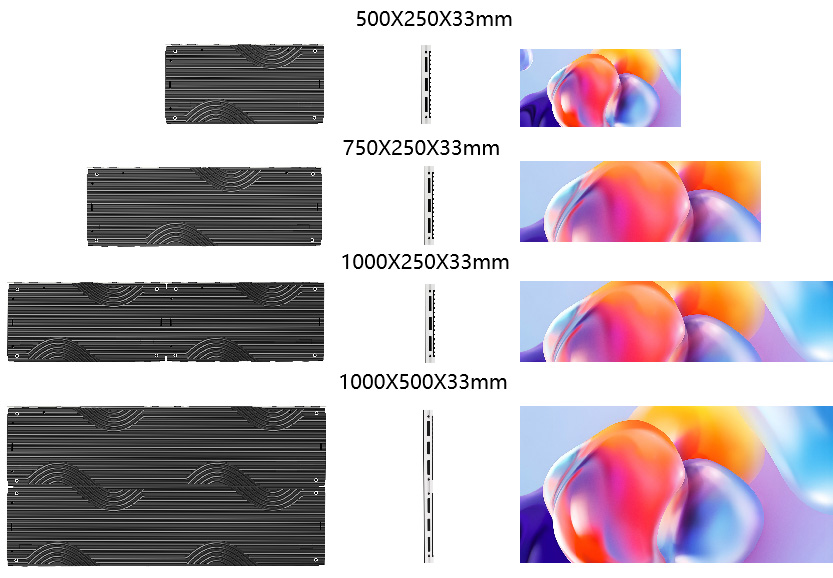
LED Display Panel Cabinet size
Die cast aluminum integrated box body, high precision, with a total thickness of only 33mm
500*250*33mm weight:3Kg
750*250*33mm weight:4Kg
1000*250*33mm weight:5.6Kg
1000*500*33mm weight:10.5Kg
Introduction to different models of LED screen display panels
High gray and high brush, dazzling colors,
High grayscale and high refresh rate, no scanning lines in photography, resulting in a more realistic and delicate display with vibrant and saturated colors.
- Large viewing angle:160°
- High refresh rate:3840Hz
- high contrast ratio:10000:1
- High grayscale:16bit
LED Screen Display Panels: Installation and Maintenance
The installation and maintenance of LED screen display panels are critical aspects that can influence their performance and longevity. Understanding these processes will help us maximize our investment.
Installation Process
The installation of LED panels should be performed by professionals to ensure optimal performance. Factors such as location, mounting methods, and electrical requirements must be considered. A proper installation guarantees that the display operates efficiently and is safe for users.

led display panel Details
The innovative design of the module ensures that the viewing angle of the light beads is not affected when rotating the module directionImpact, there will be no color difference. Not only does it improve the visual comfort, but it also enhances the visual effect The attractiveness of product.
The module is hard connected to the box, and the module adopts magnetic suction automatic adsorption, which is reliable and does not fall off.
led panel display can be free splicing, flexible display
Integrated power signal quick plug interface reduces internal wiring work in the box, making installation faster.
The box is made of high-precision die-casting material, with integrated molding, positioning columns, eagle hook locks (screws that cannot be loosened), reinforcement ribs and other details designed for higher flatness. Effectively improve installation efficiency and enhance customer experience.


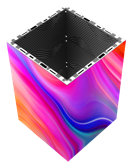
Creative splicing, infinite imagination with led display screen panel
Supports shapes such as right angles and columns to meet various creative splicing needs.
Support multiple installation methods such as lifting, wall mounted installation, and column shaped installation, suitable for more scenarios.
LED display panel parameters
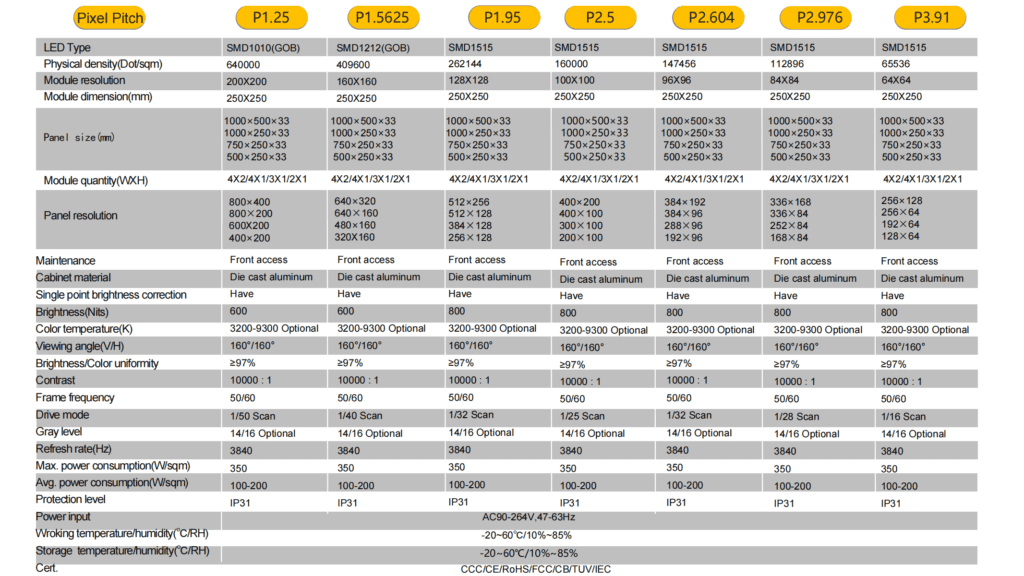
Contact Us
Order LED Display Panel.Please feel free to contact us at any time, and we will respond to you within 24 hours.
Tech Support
HARSE LED-CITY has a professional technical support team to solve any tech problem for you, tech support covers installation, configuring, and anything about LED display, please check our contact us page.
The Ultimate Guide to Choosing the Right LED Display Panel for Your Business
In today’s digital age, the presence of LED display panel is becoming increasingly vital for businesses seeking to enhance their visibility and engage their audience. As I delve into the world of LED technology, I find it essential to understand what an LED display panel is and how it functions. These panels are flat-screen displays that utilize light-emitting diodes (LEDs) to produce images and videos. Unlike traditional displays, LED panels offer superior brightness, contrast, and energy efficiency, making them a popular choice for varying business applications.
LED display panels operate through a matrix of individual LEDs that emit light in different colors. This allows for the creation of vibrant images and videos that can capture the attention of passersby. The technology behind these panels has evolved significantly, enabling them to be used in both indoor and outdoor settings, thus serving diverse purposes—from advertising to informational displays.
One of the aspects I appreciate the most about LED display panels is their versatility. Depending on the specific needs of a business, these panels can be customized in terms of size, resolution, and configuration. Whether you’re looking to create a massive outdoor billboard or a sleek indoor display, understanding the different types of LED panels available is crucial in making an informed decision.
Click Here to Jump!
- What are LED Display Panel, and How Do They Work?
- What are the Pros and Cons of an LED Display Board?
- Factors to Consider When Choosing an LED Display Panel
- LED Pixel Display Panels: Resolution and Image Quality
- LED Wall Display Panels: Applications and Benefits
- Outdoor LED Display Panel: Weatherproofing and Durability
- Indoor LED Display Panel: Enhancing Interior Spaces
- LED Display Panel Pricing: Factors Affecting Cost
- How to Visually Differentiate an LED Panel from an LCD Panel?
- LED Screen Display Panels: Installation and Maintenance
- How Does One Create an LED Sign Board and Program It?
- Conclusion: Making the Right Choice for Your Business
1.What are LED Display Panel, and How Do They Work?
ED display panels are composed of numerous tiny light-emitting diodes (LEDs) arranged in a grid format. Each LED can emit different colors, which combine to create a full spectrum of colors on the screen. The technology behind these panels is simpler than it may seem. When an electrical current passes through the diodes, they illuminate, producing images based on the data received from a controller.
The panels can be categorized primarily into two types: passive and active matrix displays. Passive matrix displays light up rows and columns, while active matrix displays control each individual pixel, which results in better image quality and faster refresh rates. This distinction is crucial when deciding which type of panel is appropriate for your business’s needs.
Moreover, LED display panel come equipped with various features such as high refresh rates and wide viewing angles. These features enhance the overall viewing experience and ensure that your message is seen clearly from different distances and angles. Understanding how these panels work will empower you to leverage their capabilities effectively.
2.What are the Pros and Cons of an LED Display Board?
When considering an LED display board for your business, it’s important to weigh the advantages and disadvantages. Here’s a breakdown that I find helpful:
Pros:
- High Visibility: One of the standout features is their brightness. LED panels can be seen in various lighting conditions, ensuring your message is always visible.
- Energy Efficiency: Compared to traditional displays, LED panels consume significantly less power, making them a cost-effective solution in the long run.
- Durability: LED displays are designed to withstand harsh weather conditions, especially outdoor models, which can resist water and dust.
Cons:
- Initial Cost: The upfront investment for high-quality LED display panel can be substantial. However, this is often offset by lower maintenance and operational costs.
- Limited Viewing Angle: While many LED displays have improved viewing angles, some models still struggle with color accuracy and brightness when viewed from extreme angles.
- Maintenance Challenges: Depending on the model and usage, maintenance can be a concern, especially if individual LEDs fail. This can lead to costly repairs if not addressed promptly.
Overall, weighing these pros and cons will help you decide if an LED display board aligns with your business objectives.
3.Factors to Consider When Choosing an LED Display Panel
Choosing the right LED display panel requires careful consideration of several factors. Here are some key aspects that I recommend focusing on:
1. Purpose and Location
Understanding the primary purpose of the display is crucial. Are you using it for advertising, information dissemination, or entertainment? The location of the panel—whether indoor or outdoor—will also dictate certain specifications like brightness and durability.
2. Resolution and Pixel Pitch
Resolution is another critical aspect. A higher pixel density means better image quality. I often recommend looking into the pixel pitch, which is the distance between the centers of two adjacent pixels. A smaller pixel pitch results in higher resolution and clarity, especially for close viewing distances.
3. Budget
Finally, budgeting is an essential consideration. LED display panel pricing can vary significantly based on size, resolution, and technology. It’s important to find a balance between quality and cost to ensure a smart investment.
By keeping these factors in mind, you can make an informed decision that aligns with your business needs and goals.

4.LED Pixel Display Panels: Resolution and Image Quality
When it comes to LED pixel display panels, resolution and image quality play a pivotal role in their effectiveness. As I navigate through various options, I have found that pixel resolution is typically expressed in terms of pixel pitch, measured in millimeters. A smaller pixel pitch translates to a higher resolution, which is crucial for applications that require detailed images.
For instance, if your business is in a location where viewers will be standing close to the display, such as a retail store, opting for a panel with a smaller pixel pitch (like 2mm or 3mm) is advisable. This ensures that the images remain sharp and clear, even when viewed from a short distance. On the other hand, if the display is placed high or far away, a larger pixel pitch (like 10mm or 12mm) may suffice, as the audience will not be as close.
Moreover, the technology behind the LEDs also contributes significantly to image quality. I have encountered display panels that utilize advanced technologies like HDR (High Dynamic Range) and color calibration systems to enhance the vibrancy and accuracy of colors displayed. Investing in these technologies can make a substantial difference in how your content is perceived.
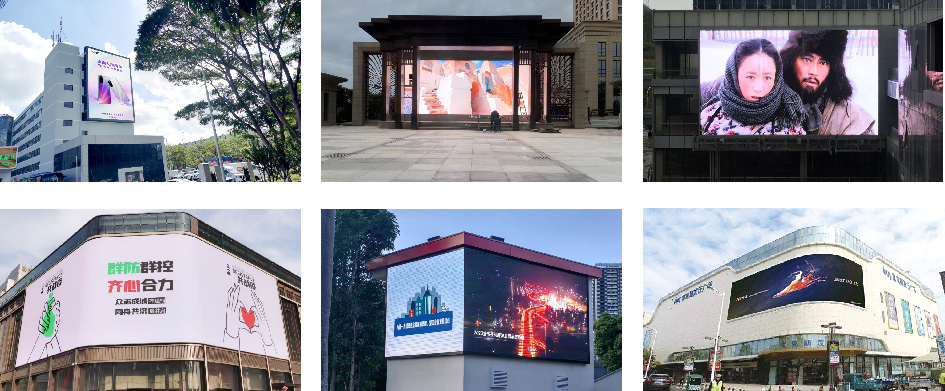
5.LED Wall Display Panels: Applications and Benefits
LED wall display panels are gaining traction across various industries due to their versatility and visual impact. From corporate environments to entertainment venues, the applications for these panels are endless. Personally, I find their ability to create immersive environments particularly impressive.
Applications:
- Advertising: Businesses are increasingly using LED wall displays for advertising purposes, capturing the attention of potential customers effectively.
- Events and Concerts: These panels are commonly employed in event spaces to enhance the visual experience, providing dynamic backdrops and live feeds.
- Corporate Communications: Companies utilize LED wall displays in conference rooms for presentations, making communication more engaging and interactive.
Benefits:
- Dynamic Content: One of the most significant advantages is the ability to display dynamic content. Unlike static signage, these panels can be updated in real-time, allowing businesses to make announcements or share promotional content quickly.
- High Engagement: LED walls tend to attract more attention than traditional displays, which can lead to increased foot traffic and customer engagement.
- Customizability: Businesses can customize LED wall panels to fit their branding and specific needs, whether that means changing the size, shape, or content displayed.
In summary, the applications and benefits of LED wall display panels make them an attractive option for businesses looking to enhance their visual communication strategy.
6.Outdoor LED Display Panel: Weatherproofing and Durability
Outdoor LED display panels are designed with resilience in mind. As I explore the features that set these panels apart, weatherproofing and durability are at the forefront. These panels are constructed to withstand various weather conditions, including rain, snow, and extreme temperatures, ensuring they function optimally regardless of the environment.
Weatherproofing Features:
- IP Ratings: Outdoor LED display panels are typically rated with an IP (Ingress Protection) rating, indicating their resistance to dust and moisture. For instance, an IP65 rating means the panel is dust-tight and can withstand water jets from any direction.
- Robust Housing: Many outdoor panels are built with rugged materials that can resist impacts and harsh weather, ensuring longevity and reliability.
- Temperature Control: Some models incorporate cooling systems or heat-resistant materials to maintain optimal operating temperatures, preventing overheating in direct sunlight.
Durability Aspects:
Outdoor panels are often subjected to various challenges, from environmental factors to vandalism. I find it reassuring that many manufacturers offer protective features, such as tempered glass surfaces to guard against scratches and impacts. Additionally, regular maintenance checks and cleaning protocols can help keep the display in optimal condition.
By investing in outdoor LED display panels that prioritize weatherproofing and durability, businesses can ensure their investments serve them well over time, reducing the need for frequent replacements or repairs.
7.Indoor LED Display Panel: Enhancing Interior Spaces
While outdoor LED panels are designed to withstand the elements, indoor LED display panel focus on enhancing the ambiance and functionality of interior spaces. As I consider the various features of these panels, it becomes apparent that they can transform the way businesses communicate with their audience.
Aesthetic Appeal:
Indoor LED display panels come in various designs and sizes, enabling businesses to create stunning visual displays that enhance their branding. From retail stores to corporate offices, these panels can be integrated seamlessly into the overall design of the space. I have witnessed firsthand how an eye-catching LED display can draw customers in and create a lasting impression.
Versatile Applications:
- Retail Environments: In retail settings, indoor LED panels can showcase products, promotions, or branding messages in a visually appealing manner, encouraging customer interaction and purchases.
- Corporate Settings: Companies often use indoor LED panels for presentations, video conferencing, and information sharing, making meetings more engaging and productive.
- Event Spaces: Indoor venues can leverage these displays to create immersive experiences, showcasing dynamic content that captivates attendees.
Enhanced Customer Experience:
Ultimately, the goal of any indoor LED display panel is to enhance the customer experience. By providing relevant and engaging content, businesses can foster a deeper connection with their audience. Whether it’s through interactive displays or captivating visuals, the potential for creating memorable experiences is immense.
8.LED Display Panel Pricing: Factors Affecting Cost
When it comes to purchasing an LED display panel, understanding the pricing structure is crucial. As I navigate through the various options available, several factors affect the overall cost. Here’s a breakdown that I find helpful:
1. Type of Panel
The type of LED display panel—whether it’s an indoor or outdoor model—plays a significant role in pricing. Outdoor panels are generally more expensive due to their weatherproofing and durability features.
2. Resolution and Size
Higher resolution panels with smaller pixel pitches often come with a higher price tag. Additionally, the size of the panel directly correlates with the cost. Larger panels require more materials and technology, which can drive up the price.
3. Customization and Features
Customization options, such as special shapes or unique designs, can also impact pricing. Features like HDR capabilities, advanced cooling systems, and enhanced brightness levels may add to the overall cost, but they can also significantly improve performance.
4. Installation and Maintenance
Finally, don’t forget to consider installation and ongoing maintenance costs. Depending on the complexity of the installation and the required upkeep, these costs can add up over time.
Ultimately, understanding these pricing factors allows businesses to budget effectively and make informed decisions when selecting an LED display panel that fits their needs.
9.How to Visually Differentiate an LED Panel from an LCD Panel?
As I explore the world of display technology, distinguishing between LED and LCD panels becomes essential. While both types of displays may seem similar at first glance, they have distinct features that set them apart.
Key Differences:
- Backlighting: The most significant difference lies in their backlighting technology. LED panels use light-emitting diodes for backlighting, resulting in brighter and more vibrant images. In contrast, LCD panels rely on fluorescent backlighting, which can sometimes lead to duller colors.
- Thickness and Weight: LED panels are generally thinner and lighter than their LCD counterparts. This can be an important consideration when space is limited or when a sleek design is desired.
- Color Accuracy: LED panels typically offer better color accuracy and contrast levels, making them a preferred choice for businesses that require high-quality visual displays.
Visual Identification:
To visually differentiate between the two, look for the following:
- Brightness: LED displays will appear brighter and more vivid, especially in well-lit environments.
- Viewing Angles: LED panels often provide wider viewing angles without color distortion, while LCD displays may exhibit shifts in color and brightness when viewed from an angle.
- Response Time: LED displays usually have faster response times, which translates to smoother motion and less blurring, particularly in fast-paced video content.
By being aware of these distinguishing characteristics, I can confidently choose the right display technology for my business needs.
10.LED Screen Display Panels: Installation and Maintenance
Installing an LED display panel requires careful planning and execution. As I consider the steps involved, I find that understanding the installation process can help ensure a smooth experience.
Installation Process:
- Site Assessment: The first step is to assess the installation location. Factors such as visibility, power supply, and mounting options should be evaluated to ensure optimal performance.
- Structure Preparation: Depending on the size and weight of the panel, a supporting structure may need to be constructed or reinforced. This is vital for ensuring safety and durability.
- Connection and Calibration: After the panel is mounted, the next step involves connecting it to the power supply and video source. Calibration is essential to ensure color accuracy and brightness levels are set correctly.
Maintenance Considerations:
Once the panel is installed, regular maintenance is crucial to keep it functioning optimally. Here are some maintenance tips I find useful:
- Cleaning: Dust and dirt can accumulate on the surface of the display, affecting visibility. Regular cleaning with appropriate materials is essential to maintain image quality.
- Software Updates: Keeping the software updated ensures that the panel operates smoothly and can help prevent technical issues.
- Regular Inspections: Scheduling routine inspections can identify potential problems early, allowing for timely repairs and minimizing downtime.
By following these installation and maintenance guidelines, businesses can maximize the longevity and effectiveness of their LED screen display panels.
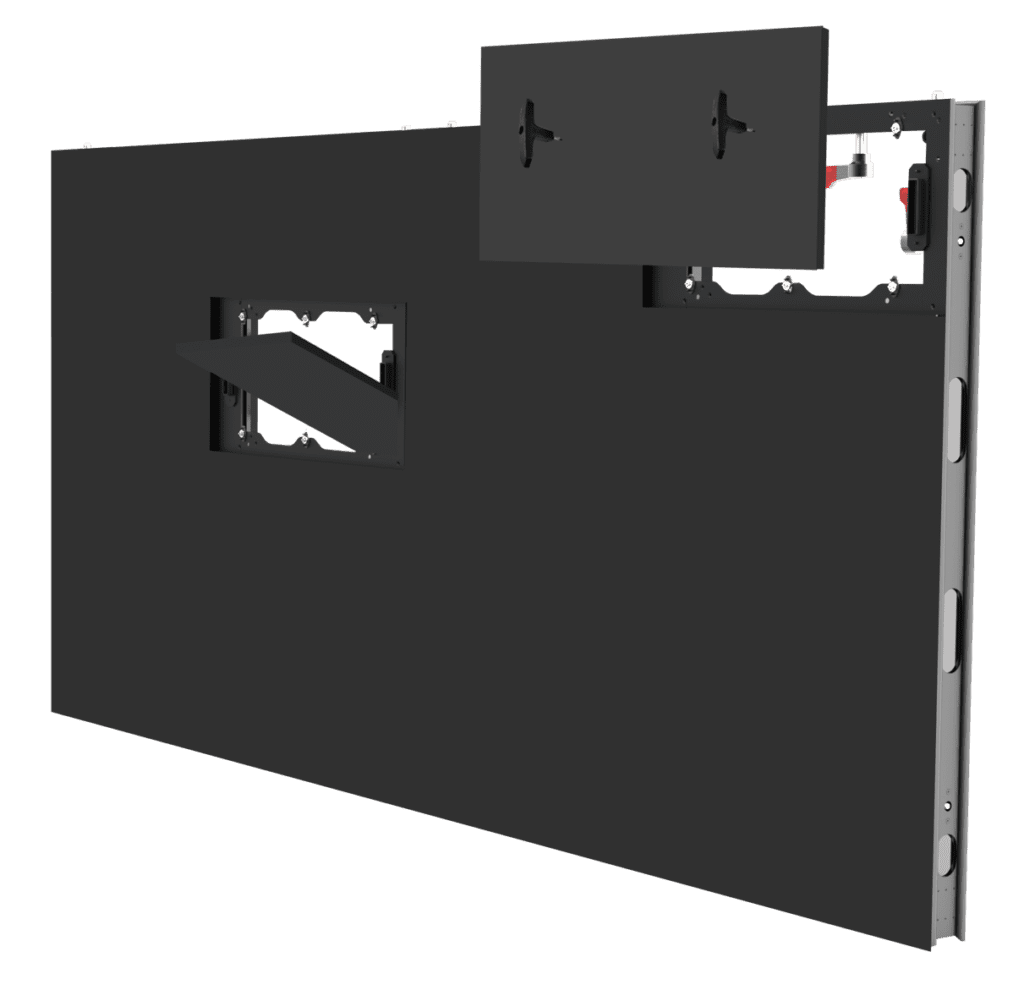
11.How Does One Create an LED Sign Board and Program It?
Creating an LED sign board may seem daunting, but with the right approach, it can be a rewarding experience. Here’s a step-by-step guide that I find beneficial:
Step 1: Design the Sign
Begin by designing the sign’s layout and content. Consider what message you want to convey and how it aligns with your branding. Software tools can help create a visually appealing design that captures attention.
Step 2: Choose the Right Hardware
Selecting the appropriate LED board is crucial. Consider factors such as size, resolution, and pixel pitch based on your needs. Additionally, ensure you have the necessary controllers and power supplies.
Step 3: Installation
Once you have your hardware, follow the installation guidelines provided by the manufacturer. Secure the sign in a visible location, ensuring it meets any local regulations regarding signage.
Step 4: Programming
Programming the LED sign board typically involves using specialized software. This software allows you to input the content, set display schedules, and configure animations or effects. Familiarize yourself with the software to maximize its capabilities.
Step 5: Testing and Maintenance
After programming, conduct thorough testing to ensure everything functions as expected. Regular maintenance checks and updates will keep your sign board running smoothly and looking fresh.
Creating an LED sign board can significantly enhance your business’s visibility and engagement with customers.
12.Conclusion: Making the Right Choice for Your Business
Ultimately, the decision to invest in an LED display panel is one that can significantly impact your business. As I reflect on the various factors discussed—from understanding the technology to considering pricing and installation—it’s clear that being informed is key.
Whether you choose an indoor or outdoor panel, prioritize resolution, and consider your specific needs and budget. By doing so, you can ensure that your investment aligns with your goals and enhances your brand’s visibility.
With the right LED display panel, you can effectively communicate your message, engage your audience, and create a memorable experience that drives success. If you’re ready to elevate your business with the power of LED technology, let’s explore your options together!
Ready to transform your business with the right LED display panel? Contact us today to discuss your needs and discover the perfect solution for your brand!
Send Us A Message
Get the Latest LED Display Panel Pricelist Free
Free Sample Available For your LED Display Project.
